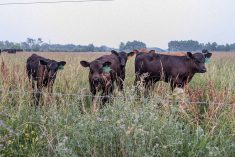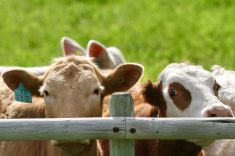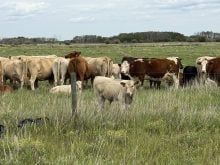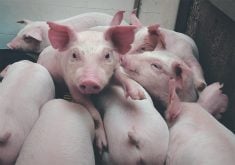COALDALE, Alta. – A wide band of red cutting across the middle of a county of Lethbridge map has farmers there worried about their future.
That red band represents a strip of land called Feedlot Alley, where the county has proposed a halt on further intensive livestock development. Other jurisdictions are watching to see how far the County of Lethbridge can take this tough, new land-use bylaw.
During an open house in Coaldale where county representatives talked with taxpayers, the tone was a low-key attempt to reassure producers that they won’t be driven out of business. The county wants suggestions from the public on how to make the bylaw acceptable to those living in the municipality.
Read Also

Mixed results on new African swine fever vaccine
The new African swine fever vaccine still has issues, but also gave researchers insight into how virus strain impacts protection against the deadly pig disease.
“The intention isn’t necessarily to take feedlots out of those areas,” said Tom Golden, of the Oldman River Intermunicipal Service Agency.
Some producers weren’t so sure.
Lance Carnine, owner of Sirocco Feedlot located close to the banks of the Oldman River, said the area designated for a moratorium is too large. He is worried a prohibition could devalue his property.
“The value of my land could decrease. That’s my retirement,” he said.
Expansion is going to be nearly impossible for people like him in the designated area because they have to apply for an amendment to the bylaw and have their farms rezoned.
“That’s going to be difficult and you would probably be turned down,” said Carnine.
In exchange, he wants the county and City of Lethbridge to reach an agreement on city boundaries expansion and to consider how the city handles its effluent from sewers and storm drains emptying into the Oldman River.
Leighton Kolk, who has a family-owned feedlot and poultry operation, is also worried about devalued property.
“As it stands, the bylaw has the potential to arbitrarily reduce the value of certain farms and intensive livestock operations,” said Kolk.
“The fork in the road is going to come whether it is here or 10 years from now.”
Kolk doesn’t want to listen to high-pitched rhetoric but prefers a group be set up to make this a more workable bylaw than originally proposed.
He also wants a phase-in period to allow older operations time to adjust and gather money so they can revamp to higher environmental standards.
Eugene Wauters, a county councillor, said everyone must meet the standards within a set time limit. He admits it may force some out of business because they won’t be able to afford to upgrade.
“There’s no use enforcing an existing bylaw and having the new developments conform to it and the old ones slipping under it,” Wauters said.
County manager Layne Johnson said the first reading of the bylaw is May 19 and a public hearing will be held in the second week of June.
The bylaw covers all types of land use in the county, including permits for intensive livestock development. Open houses were held in Coaldale and Picture Butte to allow the public to talk about the implications. It is expected the bylaw will be revised considerably based on information from the public at these meeting.
As it stands, the bylaw proposes two agricultural districts that will be named Rural Agriculture 1 and 2. Areas designated RA-1 will not allow any more intensive development. The restricted areas include those surrounding reservoirs like Keho Lake and all land on both sides of the Oldman and Little Bow Rivers to the eastern boundaries of the county.
The most recent code of practice for the safe handling of manure will be part of the bylaw.
Some of the proposed requirements include 12-month storage of manure, incorporation of manure into the ground within 48 hours of spreading and restrictions on spreading on frozen ground. Land-owners receiving manure from other operations may be asked to get permission every year.















